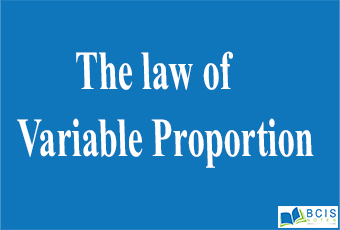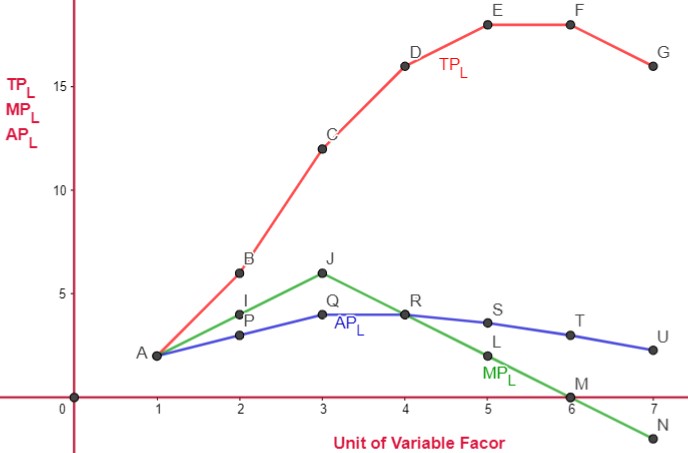
The law of Variable Proportion:
The law of variable proportion is also known as the law of diminishing returns. It is the law based on the short-run production function. If we increase variable factors keeping other factors constant then, the productivity will increase at an increasing rate, reaches the maximum point and finally, productivity will decline.
“ As more and more units of a variable factor input are employed, all other input quantities held constant, the total output may initially increase at an increasing rate and then increase in diminishing rate and after reaching the maximum level it will eventually decrease”
Assumptions:
- State of technology is given
- labour is homogeneous
- Input prices are given
| Units | TP | AP | MP |
| 1 | 10 | 10 | 10 |
| 2 | 30 | 15 | 20 |
| 3 | 60 | 20 | 30 |
| 4 | 80 | 20 | 20 |
| 5 | 90 | 18 | 10 |
| 6 | 90 | 15 | 0 |
| 7 | 80 | 11.4 | -10 |

In the above figure, we measure the number of labour and TP, AP and MP in x-axis and y-axis respectively. The figure above shows three stages:-
- Stage-I (Increasing Returns)- During this stage, TP and MP are increasing. Here, the MP reaches its maximum level and starts to decline but it remains greater than AP. At the end of this stage, AP increases to its maximum level and it equals to MP.
- Stage-II (Decreasing Returns)- In this stage, TP is increasing, AP and MP are declining. Here, the MP is less than AP. This stage starts from the point where MP=AP and end at the point where TP is maximum or MP is equal to zero i.e. 0.
- Stage-III (Negative Returns)- During this stage, TP and AP are decreasing and MP is negative. The TP and AP are decreasing but it remains positive.
Therefore, the law of variable proportion is explained above.
you may also like Production and Production Function

Leave a Reply